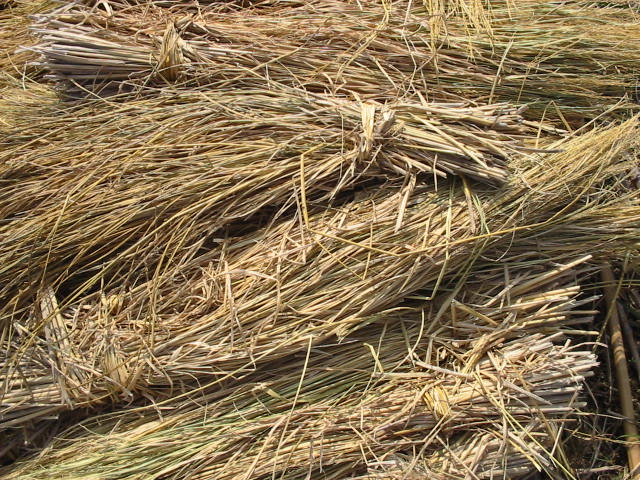|
Ascot Cap
The Ascot cap, also known as the Coffey cap or Lippincott cap, is a men's hard cap similar to the flat cap, but distinguished by its hardness and rounded shape. Ascot caps are typically made from fur or wool felt and worn in the fall or winter, but straw Ascots also exist for warmer weather. Unlike the flat cap, the inside is not lined with silk but the closed in design and softness of felt still provides comfort and warmth. The style dates back to 1900. See also * Coppola cap *Flat cap *Newsboy cap The newsboy cap, newsie cap, or baker boy hat (British) is a casual-wear cap similar in style to the flat cap. It has a similar overall shape and stiff peak (visor) in front as a flat cap, but the body of the cap is rounder, made of eight p ... {{Hats Caps British clothing ... [...More Info...] [...Related Items...] OR: [Wikipedia] [Google] [Baidu] |
Flat Cap
A flat cap is a rounded cap with a small stiff brim in front, originating in Britain and Ireland. The hat is known in Ireland as a paddy cap; in Scotland as a bunnet; in Wales as a Dai cap; and in the United States as an English cap, Irish cap, or flat cap. Various other terms exist (cabbie cap, driver cap, longshoreman cap, ivy cap, train engineer cap,etc.). Cloths used to make the cap include wool, tweed (most common), and cotton. Less common materials may include leather, linen, or corduroy. The inside of the cap is commonly lined for comfort and warmth. History The style can be traced back to the 14th century in Northern England, when it was more likely to be called a "Bonnet (headgear), bonnet". This term was replaced by "cap" before about 1700, except in Scotland, where it continues to be referred to as a ''bunnet'' in Scots language, Scots. A 1571 Act of the Kingdom of England, English Parliament was enacted to stimulate domestic wool consumption and general trade. ... [...More Info...] [...Related Items...] OR: [Wikipedia] [Google] [Baidu] |
Felt
Felt is a textile material that is produced by matting, condensing and pressing fibers together. Felt can be made of natural fibers such as wool or animal fur, or from synthetic fibers such as petroleum-based acrylic or acrylonitrile or wood pulp–based rayon. Blended fibers are also common. Natural fibre felt has special properties that allow it to be used for a wide variety of purposes. "It is fire-retardant and self-extinguishing; it dampens vibration and absorbs sound; and it can hold large amounts of fluid without feeling wet..." History Felt from wool is one of the oldest known textiles. Many cultures have legends as to the origins of felt making. Sumerian legend claims that the secret of feltmaking was discovered by Urnamman of Lagash. The story of Saint Clement and Saint Christopher relates that the men packed their sandals with wool to prevent blisters while fleeing from persecution. At the end of their journey, the movement and sweat had turned the wool int ... [...More Info...] [...Related Items...] OR: [Wikipedia] [Google] [Baidu] |
Winter
Winter is the coldest season of the year in Polar regions of Earth, polar and temperate climates. It occurs after autumn and before spring (season), spring. The tilt of Axial tilt#Earth, Earth's axis causes seasons; winter occurs when a Hemispheres of Earth, hemisphere is oriented away from the Sun. Different cultures define different dates as the start of winter, and some use a definition based on weather. When it is winter in the Northern Hemisphere, it is summer in the Southern Hemisphere, and vice versa. In many regions, winter brings snow and freezing temperatures. The moment of winter solstice is when the Sun's elevation with respect to the North or South Pole is at its most negative value; that is, the Sun is at its farthest below the horizon as measured from the pole. The day on which this occurs has the shortest day and the longest night, with daytime, day length increasing and nighttime, night length decreasing as the season progresses after the solstice. The earl ... [...More Info...] [...Related Items...] OR: [Wikipedia] [Google] [Baidu] |
Straw
Straw is an agricultural byproduct consisting of the dry stalks of cereal plants after the grain and chaff have been removed. It makes up about half of the yield of cereal crops such as barley, oats, rice, rye and wheat. It has a number of different uses, including fuel, livestock bedding and fodder, thatching and basket making. Straw is usually gathered and stored in a straw bale, which is a bale, or bundle, of straw tightly bound with twine, wire, or string. Straw bales may be square, rectangular, or round, and can be very large, depending on the type of baler used. Uses Current and historic uses of straw include: * Animal feed **Straw may be fed as part of the roughage component of the diet to cattle or horses that are on a near maintenance level of energy requirement. It has a low digestible energy and nutrient content (as opposed to hay, which is much more nutritious). The heat generated when microorganisms in a herbivore's gut digest straw can be usefu ... [...More Info...] [...Related Items...] OR: [Wikipedia] [Google] [Baidu] |
Coppola Cap
The coppola () is a traditional kind of flat cap typically worn in Sicily and Calabria, where is it known as ''còppula'' or ''berretto'', and also seen in Malta, Corsica, and Sardinia (where it came to be known, in the local language, as , , and or , possibly from the Latin ). Today, the coppola is widely regarded, at least in Italy, as an iconic symbol of Sicilian or Calabrian heritage. History One popular theory of the coppola is that it originates in Anglo-Saxon land, where the tradition of civil caps has been found at least since the late 16th century during the reign of the Tudors, when on Sundays and on holidays all males over six years old – with the exception of nobles and high-ranking people – had to wear woolen headdresses produced only and exclusively in England: so, in fact, it provided for an act of parliament of 1571, the short purpose of which was to support the domestic production of wool, thus protecting it from the import of foreign goods. This type o ... [...More Info...] [...Related Items...] OR: [Wikipedia] [Google] [Baidu] |
Flat Cap
A flat cap is a rounded cap with a small stiff brim in front, originating in Britain and Ireland. The hat is known in Ireland as a paddy cap; in Scotland as a bunnet; in Wales as a Dai cap; and in the United States as an English cap, Irish cap, or flat cap. Various other terms exist (cabbie cap, driver cap, longshoreman cap, ivy cap, train engineer cap,etc.). Cloths used to make the cap include wool, tweed (most common), and cotton. Less common materials may include leather, linen, or corduroy. The inside of the cap is commonly lined for comfort and warmth. History The style can be traced back to the 14th century in Northern England, when it was more likely to be called a "Bonnet (headgear), bonnet". This term was replaced by "cap" before about 1700, except in Scotland, where it continues to be referred to as a ''bunnet'' in Scots language, Scots. A 1571 Act of the Kingdom of England, English Parliament was enacted to stimulate domestic wool consumption and general trade. ... [...More Info...] [...Related Items...] OR: [Wikipedia] [Google] [Baidu] |
Newsboy Cap
The newsboy cap, newsie cap, or baker boy hat (British) is a casual-wear cap similar in style to the flat cap. It has a similar overall shape and stiff peak (visor) in front as a flat cap, but the body of the cap is rounder, made of eight pieces, fuller, and paneled with a button on top, and often with a button attaching the front to the brim (as the flat cap sometimes has). History The style was popular in Europe and North America in the early 20th century among both boys and adult men. As the name suggests, it was at the time associated with newspaper boys. This gives rise to a misunderstanding. It is true that many newspaper boys and other working boys at the time wore flat caps along with other styles. This style was not, however, worn only by boys. Flat caps were very common for North American and European men and boys of all classes during the early 20th century and were almost universal during the 1910s-20s, particularly among the working "lower" classes. A great ... [...More Info...] [...Related Items...] OR: [Wikipedia] [Google] [Baidu] |
Caps
Caps are flat headgear. Caps or CAPS may also refer to: Science and technology Computing * CESG Assisted Products Service, provided by the U.K. Government Communications Headquarters * Composite Application Platform Suite, by Java Caps, a Java framework * Computer Animation Production System, a film animation post-production system developed by Walt Disney Feature Animation and Pixar Biology, medicine and psychology Genetics * Calcyphosin, the CAPS gene and its protein * Cleaved amplified polymorphic sequence, markers used to detect a polymorphic sequence Medical conditions * Auditory processing disorder (APD), formerly Central Auditory Processing Syndrome * Catastrophic antiphospholipid syndrome * Cryopyrin-associated periodic syndrome, a spectrum of autoinflammatory syndrome Other uses in biology, medicine and psychology * CAPS (buffer), N-cyclohexyl-3-aminopropanesulfonic acid, in biochemistry, a buffering agent * Cognitive-affective personality system, a model within ... [...More Info...] [...Related Items...] OR: [Wikipedia] [Google] [Baidu] |






.jpg)